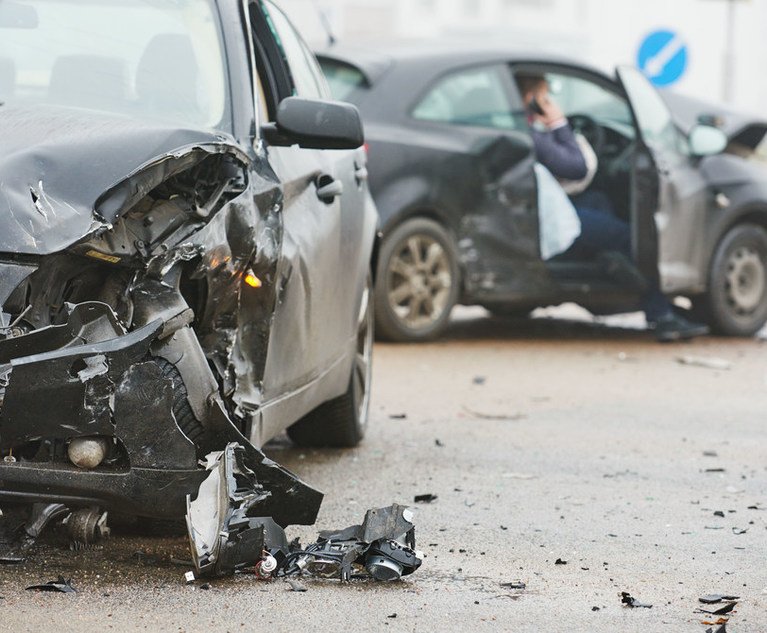It's not your imagination, it's been unusually hot across mostof the country lately.
|For the first time on record, every square inch of all50 states is forecast to see above-average temperatures for thenext three months, according to a forecast map from thefederal government's Climate Prediction Center, USA Today reported on July 26.
|The heat has been so bad on the East Coast that President Obamapersonally warned Americans to "drink water, stay out of the sun,and check on your neighbors," according to NBC News.
From uncomfortable to deadly
In 2013, 372 people died in the United States from exposure toexcessive heat, according to "Injury Facts 2016," the annual statisticalreport on unintentional injuries produced by the National Safety Council.
Heat kills by pushing the human body beyond its limits. Inextreme heat and high humidity, evaporation is slowed and the bodymust work extra hard to maintain a normal temperature. Heat-relatedillnesses can escalate rapidly, leading to delirium, organ damageand even death.
|Extreme temperatures not only impact human health, but can causedamage to homes, vehicles, and be dangerous for family pets.
|So, what can you do to minimize the risks to health and propertyduring heat waves? Check out the following reminders, resources andtips:
1. How to prepare homes for hot weather.
The Department of Homeland Security and FEMA Ready.gov website recommends the following tips toprepare your home for excessive heat:
- Install window air conditioners snugly; insulate ifnecessary.
- Check air-conditioning ducts for proper insulation.
- Install temporary window reflectors (for use between windowsand drapes), such as aluminum foil-covered cardboard, to reflectheat back outside.
- Weather-strip doors and sills to keep cool air in.
- Cover windows that receive morning or afternoon sun withdrapes, shades, awnings, or louvers. (Outdoor awnings or louverscan reduce the heat that enters a home by up to 80 percent.)
- Keep storm windows up all year.
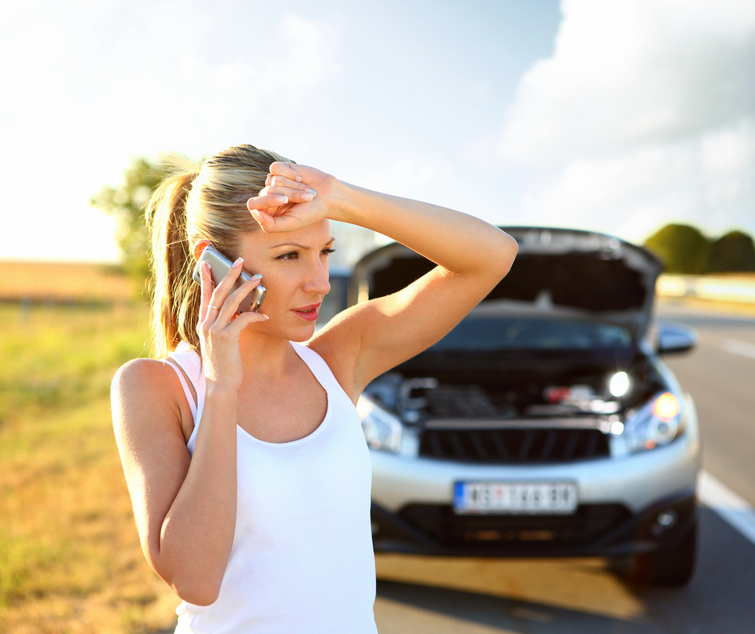
Extreme heat can take its toll of vehiclecomponents. (Photo: iStock)
2. Vehicle breakdowns can spike in extreme heat.
Experts recommend checking the engine coolant and other fluids,plus tire pressure to help you avoid being stranded on the side ofthe road during hot weather. AAA warns that extreme heat can take its tollof vehicle components.
WAVY-TV in Virginia recently reported that theoppressive heat is keeping the local AAA busy. The agency has morethan 50 drivers on the road during peak times and each truck hasbeen responding to 9 to 17 calls per day.
|Glenn Robinson, a supervisor based out of the AAA Virginia Beachoffice, reportedly said many of the cars they service on theroadside are less than 10-years-old. Robinson says car batteries innewer cars deteriorate faster because of the added technology invehicles.
|Robinson says drivers should be careful if their car batterygives off a rotten egg smell. “If you smell that sulfuricgas smell, don’t try to start the car. Call us out there. Don’t tryto jump start it, because that is a very explosive gas.”
|Also, don't forget to protect your vehicle's interior. Too muchheat is harmful seats, carpets, covers, steering wheel anddashboards.
||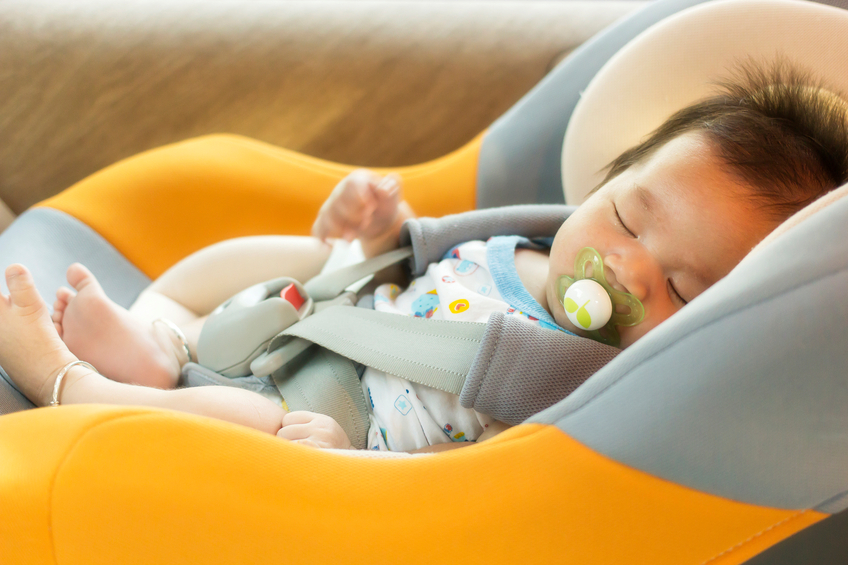
There is now car seat technology available that willsound an alarm after the driver turns off the car, reminding him orher that a child is in the back seat. (Photo: iStock)
3. At least 23 kids have died in hot cars this year.
On average, 37 children die each year from heat-related deathsafter being trapped inside vehicles. Even the best of parents orcaregivers can unknowingly leave a sleeping baby in a car— and the end result can be injury or even death.
A 3-year-old died on Sunday, July 24, 2016, in Dallas, Texas,marking the 21st child to die in a car in the U.S. this year,according to U.S. News and World Report. The child wasleft in the car while his father went to a Bible study at a localchurch in the Dallas area, where temperatures reached 98degrees, according to the WashingtonPost.
|On June 18, 3-year-old twins died after they were found in apickup truck outside their home in Louisiana, according toa local news source.
|The NationalSafety Council says to never leave a child unattended in acar. If you see an unattended child in a car, call 911immediately.
Tragic mistakes
In the majority of cases of child heatstroke fatality — 53percent — parents simply forgot their child was inthe car, according to NoHeatStroke.org.Babies sleep soundly, and parents are stressed and often rushing toget to work or complete errands. These horrendous incidents happento people from all walks of life.
Newcar seat technology is available that will sound an alarmafter the driver turns off the car, reminding him or her that achild is in the back seat. SaferCar.gov offers other suggestions forkeeping your precious cargo safe:
- Keep a stuffed animal in the child's seat, then move it to thefront seat after you strap your child in as a visual reminder.
- If your daily routine changes, always make sure your child hasarrived at his destination safely.
- Make sure daycare providers know to call parents or relativesif the child does not arrive.
- Never leave a child alone in a car; use drive-through servicesand pay at the pump so you won't be tempted to leave the child"just for a moment."
- Remember, children overheat four times faster thanadults; a child is likely to die when his body temperaturereaches 107 degrees, and that can happen in minutes.
- Even in 70-degree weather a vehicle can reach life-threateningtemperatures quickly; regardless of the outside temperature,the average increase in temperature inside a vehicle is3.2 degrees per five-minute interval.
- If you ever see a child alone in a car, call 911immediately.
- If you see a child is in distress, remove the child from thevehicle; most states have Good Samaritan laws.

Drink plenty of water during hot weather to avoidheat-related illness. (Photo: iStock)
4. Key safety tips during extreme heat.
Ready.gov recommends the following hot weather safety tips:
» Drink plenty of water— even if you do not feel thirsty. Avoid drinks with caffeine.Persons who have epilepsy or heart, kidney, or liver disease; areon fluid-restricted diets; or have a problem with fluid retentionshould consult a doctor before increasing liquid intake.
|» Never leave children or pets alone inclosed vehicles.
|» Check on family, friends, and neighborswho do not have air conditioning and who spend much of their timealone.
|» Check on your animalsfrequently to ensure that they are not suffering from theheat.
|» Go to a designated public shelter if your homeloses power during periods of extreme heat. Stay on thelowest floor out of the sunshine if air conditioning is notavailable.
|» Check the weather/listen to NOAA Weather Radio for critical updatesfrom the National Weather Service.
|» Avoid strenuous work during the warmest part ofthe day. Use a buddy system when working in extreme heat,and take frequent breaks.
|» Dress in loose-fitting, lightweight, andlight-colored clothes that cover as much skin as possible.Avoid dark colors because they absorb the sun’s rays.
|» Protect face and head by wearingsunblock and a wide-brimmed hat.
|» Postpone outdoor games andactivities.
|» Stay indoors as much as possible andlimit exposure to the sun.
|» Eat well-balanced, light, and regularmeals. Avoid using salt tablets unless directed to do soby a physician.
|» Limit intake of alcoholic beverages.
|» Avoid extreme temperature changes.
|» Consider spending the warmest part of the day inpublic buildings such as libraries, schools, movietheaters, shopping malls, and other community facilities.Circulating air can cool the body by increasing the perspirationrate of evaporation.
|» Download the FEMAApp for heat advisories and safety tips.
|» Text SHELTER + your ZIP codeto 43362 (4FEMA) to find the nearest shelter inyour area (example: shelter 12345).
||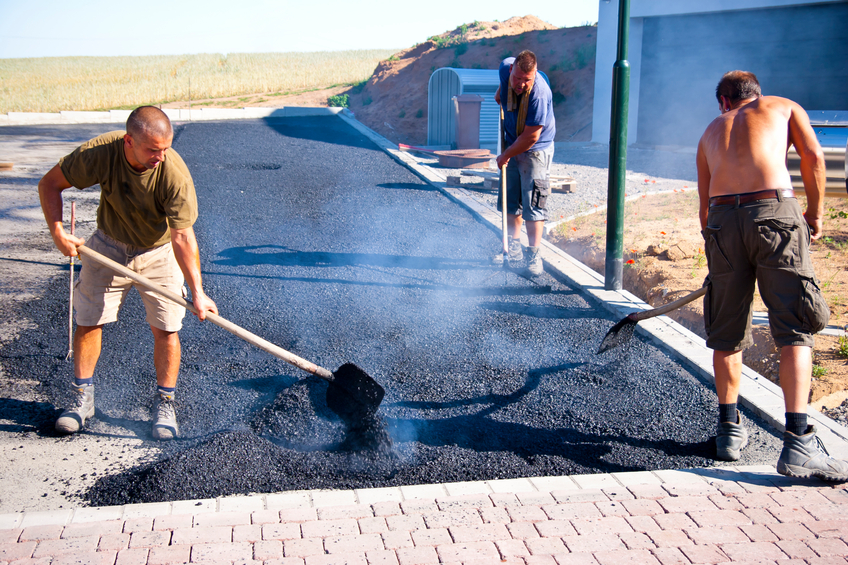
Federal law requires that employers protect workersfrom extreme heat. (Photo: iStock)
5. Employers must protect workers from excessive heat.
In 2014 alone, 2,630 workers sufferedfrom heat illness and 18 died from heat stroke andrelated causes on the job, according to the Occupational Safety & HealthAdministration.
Under OSHA rules, employers are responsible for providingworkplaces free of known safety hazards. This includes protectingworkers from extreme heat. An employer with workers exposed to hightemperatures should establish a complete heat illness preventionprogram. OSHA recommends the following guidelines:
- Provide workers with water, rest and shade.
- Allow new or returning workers to gradually increase workloadsand take more frequent breaks as they acclimatize, or build atolerance for working in the heat.
- Plan for emergencies and train workers on prevention.
- Monitor workers for signs of illness.
Working in full sunlight can increase heat index values by 15degrees Fahrenheit. Keep this in mind and plan additionalprecautions for working in these conditions.
|To prevent heat-related illness and fatalities on the job:
- Drink water every 15 minutes, even if you are not thirsty.
- Rest in the shade to cool down.
- Wear a hat and light-colored clothing.
- Learn the signs of heat illness and what to do in anemergency.
- Keep an eye on fellow workers.
- "Easy does it" on your first days of work in the heat. You needto get used to it.
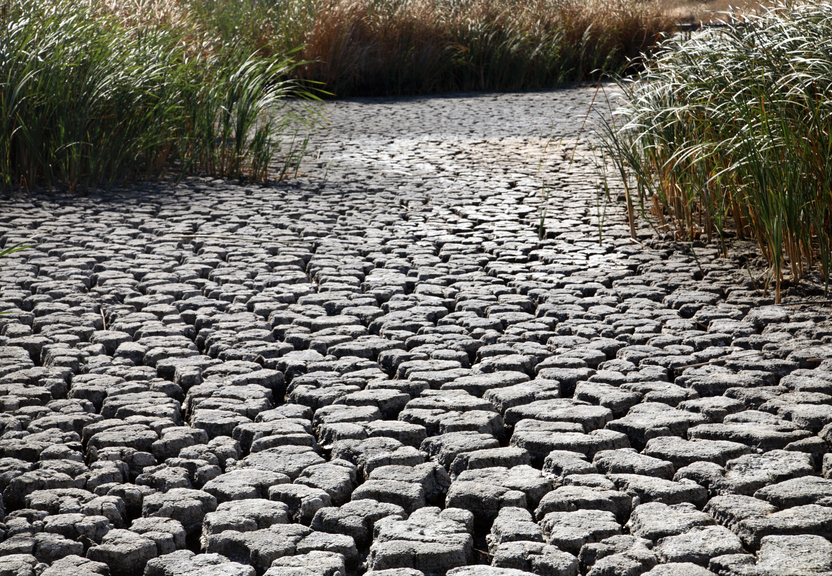
Drought increases the risk of other hazards suchas wildfire, flash flood, and possible landslidesand debris flow. (Photo: iStock)
6. Drought is affecting more than 15% of the U.S.
According to the NationalIntegrated Drought Information System , as of July 19,Moderate to Exceptional drought is affecting about 15.7 percent ofthe area of the United States, impacting 99.4 million people.
Drought creates environmental conditions that increase the riskof other hazards such as wildfire, flash flood, and possible landslides and debris flow.
|Always observe state and local restrictions on water use duringa drought. If restricted, for example, don't water your lawn, washyour car, or other nonessential uses, to help ensure there isenough water for essential uses.
||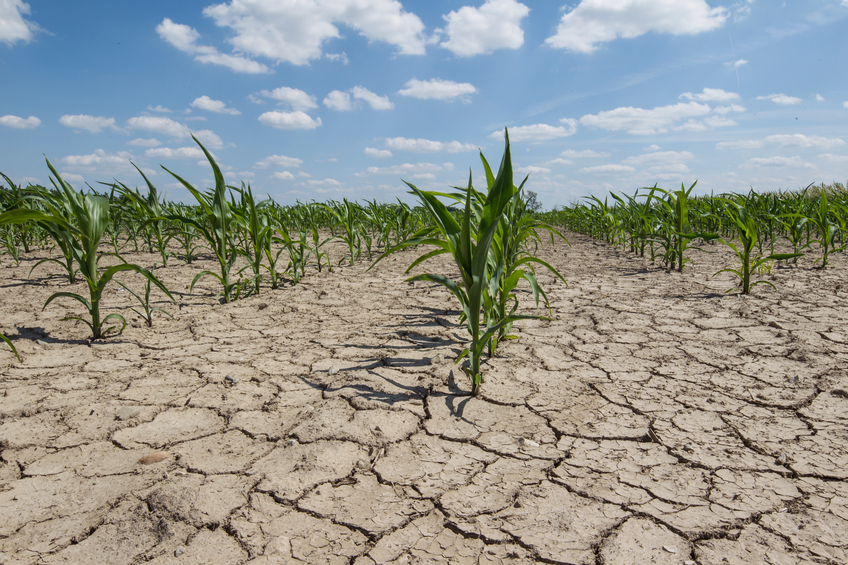
Severe drought has resulted in significantly lower cropyields in some parts of the U.S. (Photo: iStock)
7. Crop losses from drought and heat.
Multiple peril insurance covers loss of crop value as a result ofnatural disasters, including drought and unusually hotweather.
While multiple peril insurance covers most economicallysignificant agricultural crops grown in the U.S. — more than 100crops — insurance for a specific crop may not be available in everystate or in every county within a state. Most crops for which thereis not yet coverage are eligible for the limited protection offeredby the Noninsured Crop Disaster AssistanceProgram.
Significantly lower crop yields
According to the Insurance Information Institute (I.I.I.), data fromthe Federal Crop Insurance Corp. for the crop year 2012, show thatindemnities (claim payments) totaled nearly $17 billion, the resultof the severe drought that has resulted in significantly lower cropyields, but this was partially offset by more than $11 billion inpremiums paid by farmers for catastrophic and regular coverage. Thegovernment’s coverage subsidy came to $6.9 billion.
The USDA Risk ManagementAgency (RMA) has developed programs for pasture, rangeland,forage (PRF) and hay to provide a safety net for farmers who facedrought conditions. There are two programs: the Rainfall Indexprogram and the Vegetation Index — both use indexes and grids thatare smaller than counties to determine expected losses.
|The Rainfall program is based on accumulated rainfall and theVegetation program relies on satellite images to measure departuresfrom expected losses in a given grid area.
||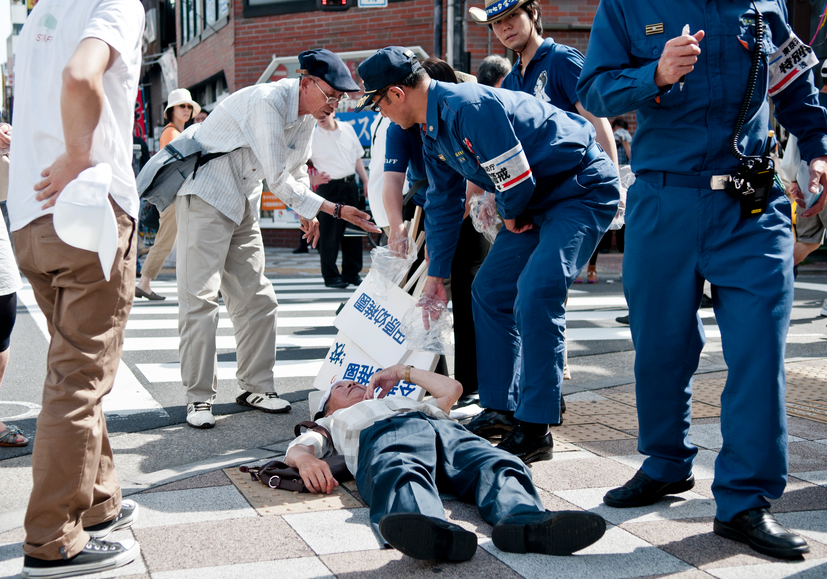
A senior citizen collapses from heat stroke and lies on theground while paramedics rush to the scene. (Photo: iStock)
8. How to treat heat-related illnesses.
According to the American Red Cross, people are susceptible tothree heat-related conditions during heat waves. Here's how torecognize and respond to them:
Heat cramps. Muscular pains and spasms thatusually occur in the legs or abdomen. Heat cramps are often anearly sign that the body is having trouble with the heat.
- Get the person to a cooler place and have him or her rest in acomfortable position. Lightly stretch the affected muscle andgently massage the area.
- Give an electrolyte-containing fluid, such as a commercialsports drink, fruit juice or milk. Water may also be given. Do notgive the person salt tablets.
Heat exhaustion. A more severe conditionthan heat cramps. Heat exhaustion often affects athletes,firefighters, construction workers and factory workers. It alsoaffects those wearing heavy clothing in a hot, humidenvironment.
- Signs of heat exhaustion include cool, moist, pale, ashen orflushed skin; headache; nausea; dizziness; weakness; andexhaustion.
- Move the person to a cooler environment with circulating air.Remove or loosen as much clothing as possible and apply cool, wetcloths or towels to the skin. Fanning or spraying the person withwater also can help. If the person is conscious, give small amountsof a cool fluid such as a commercial sports drink or fruit juice torestore fluids and electrolytes. Milk or water may also be given.Give about 4 ounces of fluid every 15 minutes.
- If the person’s condition does not improve or if he or sherefuses water, has a change in consciousness, or vomits, call911 or the local emergency number.
Heat stroke. A life-threatening conditionthat usually occurs by ignoring the signals of heat exhaustion.Heat stroke develops when the body systems are overwhelmed by heatand begin to stop functioning.
- Signs of heat stroke include extremely high body temperature,red skin which may be dry or moist; changes in consciousness;rapid, weak pulse; rapid, shallow breathing; confusion; vomiting;and seizures.
- Heat stroke is life-threatening. Call 911 or thelocal emergency number immediately.
- Rapidly cool the body by immersing the person up to the neck incold water, if possible OR douse or spray the person with coldwater.
- Sponge the person with ice water-doused towels over the entirebody, frequently rotating the cold, wet towels.
- Cover the person with bags of ice.
- If you are not able to measure and monitor the person’stemperature, apply rapid cooling methods for 20 minutes or untilthe person’s condition improves.
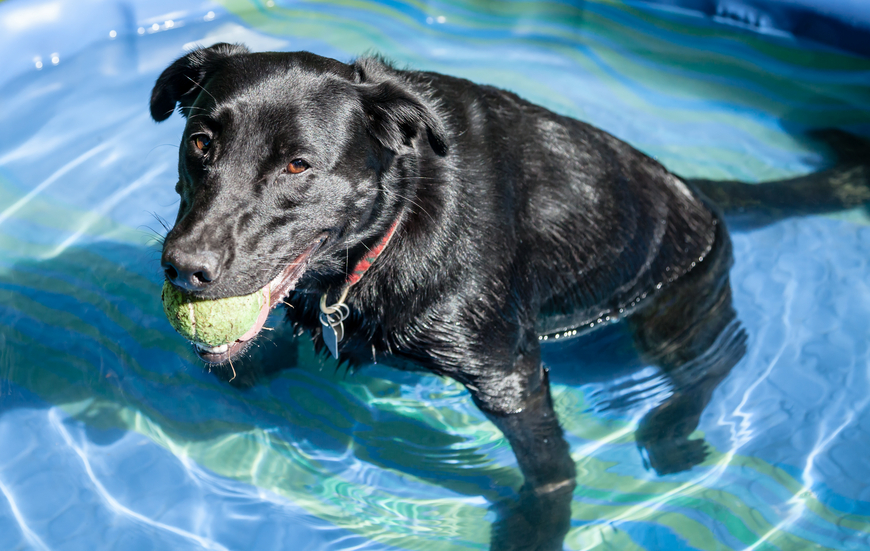
Pets respond differently to heat than humansdo. (Photo: iStock)
9. Keep pets safe in the heat.
The summer months can be uncomfortable and dangerous for people andpets. The Humane Society of the United States offersthe following tips for keeping your pets healthy and comfortablewhen temperatures rise:
Never leave your pets in a parked car. Not evenfor a minute. On an 85-degree day, for example, thetemperature inside a car with the windows opened slightly can reach102 degrees within 10 minutes. After 30 minutes, the temperaturewill reach 120 degrees. Your pet may suffer irreversible organdamage or die. What to do if you see a pet in a parkedcar.
|Limit exercise on hot days. On very hotdays, limit exercise to early morning or evening hours, and beespecially careful with pets with white-colored ears, who are moresusceptible to skin cancer, and short-nosed pets, who typicallyhave difficulty breathing. Asphalt gets very hot and can burn yourpet's paws, so walk your dog on the grass if possible. Always carrywater with you to keep your dog from dehydrating.
|Don't rely on a fan. Pets responddifferently to heat than humans do. Dogs, for instance, sweatprimarily through their feet. And fans don't cool off pets aseffectively as they do people.
|Provide ample shade and water. Any timeyour pet is outside, make sure he or she has protection from heatand sun and plenty of fresh, cold water. In heat waves, add ice towater when possible. Tree shade and tarps are ideal because theydon't obstruct air flow. A doghouse does not provide relief fromheat — in fact, it makes it worse.
|Cool your pet inside and out. Keep yourpet from overheating indoors or out with a cooling body wrap, vest,or mat (such as the Keep Cool Mat). Soak these products in coolwater, and they'll stay cool (but usually dry) for up to threedays. If your dog doesn't find baths stressful, see if she enjoys acooling soak.
Signs of heatstroke in pets
Extreme temperatures can cause heatstroke in pets. Some signs ofheatstroke are:
- Heavy panting.
- Glazed eyes.
- A rapid heartbeat.
- Difficulty breathing.
- Excessive thirst.
- Lethargy.
- Fever.
- Dizziness.
- Lack of coordination.
- Profuse salivation.
- Vomiting.
- A deep red or purple tongue.
- Seizure.
- Unconsciousness.
Animals are at particular risk for heat stroke if they are veryold, very young, overweight, not conditioned to prolonged exercise,or have heart or respiratory disease. Some breeds of dogs — likeBoxers, Pugs, Shih Tzus, and other dogs and cats with short muzzles— will have a much harder time breathing in extreme heat.
|The American Red Cross recommends you do thefollowing if you suspect pet heat stroke:
- Get your dog out of direct heat.
- Check for shock. Signs include collapse; body temperature 104degrees Fahrenheit or above; bloody diarrhea or vomit; depressionstupor; seizures or coma; excessive panting or difficultybreathing; increased heart rate; salivation.
- Take your dog's temperature.
- Spray your dog with cool water then retake temperature.
- Place water-soaked towels on the dog's head, neck, feet, chestand abdomen. Turn on a fan and point it in your dog's direction.Rub Isopropyl alcohol (70 percent) of the dog's foot pads to helpcool him, but don't use large quantities.
- Take your dog to the nearest veterinary hospital.
The goal is always to decrease the dog’s body temperature to103° F in the first 10-15 minutes. Once 103° F is reached, you muststop the cooling process because the body temperature will continueto decrease and can plummet dangerously low if you continue to coolthe dog for too long.
|Even if you successfully cool your pet down to 103° F in thefirst 10-15 minutes, you must take the dog to a veterinarian assoon as possible because consequences of heat stroke will not showup for hours or even days. Potential problems include abnormalheart rhythms, kidney failure, neurological problems andrespiratory arrest.
|Want to continue reading?
Become a Free PropertyCasualty360 Digital Reader
Your access to unlimited PropertyCasualty360 content isn’t changing.
Once you are an ALM digital member, you’ll receive:
- All PropertyCasualty360.com news coverage, best practices, and in-depth analysis.
- Educational webcasts, resources from industry leaders, and informative newsletters.
- Other award-winning websites including BenefitsPRO.com and ThinkAdvisor.com.
Already have an account? Sign In
© 2024 ALM Global, LLC, All Rights Reserved. Request academic re-use from www.copyright.com. All other uses, submit a request to [email protected]. For more information visit Asset & Logo Licensing.



